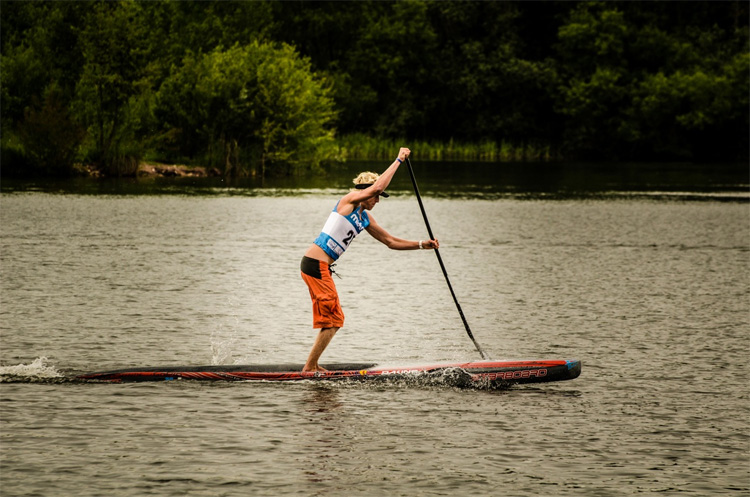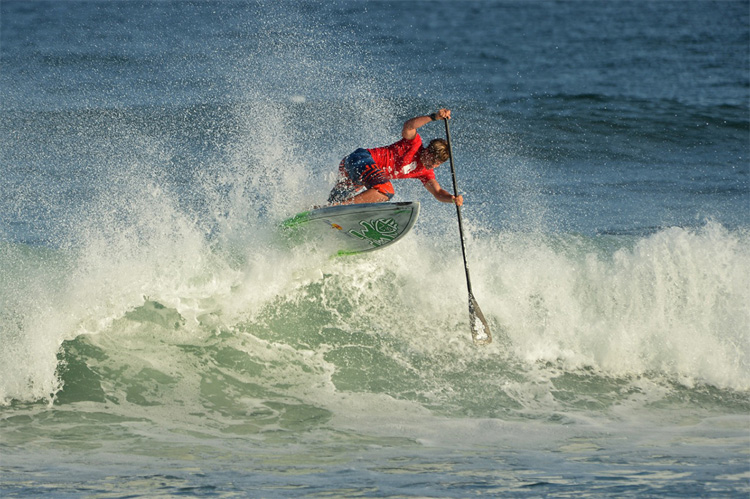Stand up paddleboarding (SUP) 101
An introduction to SUP, the fastest growing watersport in the world

SUP or Stand Up Paddle Boarding is one of the fastest growing water sports in the UK. Standing above the water on a board, 'SUPers' pull themselves through the water using a long, single bladed paddle. Although initially invented as a leisure activity, more and more people are seeing the health and fitness benefits of the sport.
Even at the most basic level, stabiliser muscles are constantly tested to keep you balanced above the board. From your core right through to your feet, your muscles will be in constant use to balance. The more unstable the board, the tougher the work out. Exercising your stabiliser muscles keeps you and your joints strong, making you less likely to get injured in other activities.
Paddling on a SUP is a full body movement. Initially you must extend your body to reach forwards with the blade and give yourself the maximum reach for the upcoming stroke. Then when the blade is dug into the water, the paddler has to drop their weight down, crunching and contracting their abs to drive the paddle backwards. To finish the stroke all of the power is pushed through the legs and into the board, providing a boost of speed for the next extension. This action of extending and contracting is like doing a crunch whilst holding a squat every time you paddle. Over time this repetition will increase your muscular endurance, strength and with the right nutrition, definition.

Another plus for a SUP workout is that you also work your mind. You have to fully concentrate on balance, direction, changeable conditions and technique. Towards the end of a long session the demands don't change and you have to teach your brain to operate under fatigue. This is something elite level athletes work on daily and something that SUPing can improve without you even realising. Being able to concentrate under fatigue will have a positive effect on your daily routine too as your ability to concentrate grows. Meaning a better day in the office thanks to a day on the water.
There are two main disciplines at the performance end of the sport; SUP racing and SUP surfing. The main difference between the two is the type of physical activity they demand.
Racing on a SUP = continuous training. After a fast start, the aim is to stick to a rhythm. Pacing yourself is key and the top athletes find the right rhythm and then focus on maintaining their technique. A real calorie burner, racing dramatically improves muscular endurance for the whole body. Concentration under fatigue is also pushed hard toward the late stages of racing as one fall could lose you many places!
SUP surfing serves as a great HIIT exercise. It has a resting phase on the outside clear of the waves, a medium intensity section when riding and then a high intensity paddle back out through the breakers. This continuous loop of rest, medium and then high intensity exercises, makes a perfect interval training setup. By going out in different conditions you can raise or lower the intensity of the workout. What's more your concentration under fatigue is really pushed as despite the workload, you must concentrate on the upcoming waves, your technique and other water users. This constant feed of information keeps you on your toes and helps you work out for far longer than you might have managed in the gym.
Sign up for workout ideas, training advice, reviews of the latest gear and more.

The beauty of the fitness training produced by SUPing, is that you may not even notice you're doing it. SUP is first and foremost a fun activity. When out on the water, you won't be thinking about the exercise because you'll be thinking of the great rides, or the beautiful coastline. This feel good factor is the real highlight of the sport. SUPing is a great way of releasing mood lifting endorphins. Endorphins are the body’s natural feel good chemicals, and when they are released through exercise, your mood is boosted naturally. As well as endorphins, SUPing also releases adrenaline, serotonin, and dopamine. These chemicals work together to make you feel good.
It's easy to see why so many people are SUPing in the UK. On a fitness level, it works the whole body simultaneously. Muscular and cardio efficiency and strength, are improved in unison and the feel good endorphins and chemicals released lift your mood and leave you with a smile after every 'workout'.
About the author: Jake Patrick is a UK Team Rider for Starboard SUP and a buyer for Boylo's Watersports
